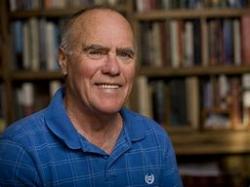How refreshing it would be if more big-time high school stars played football and basketball at Historically Black Colleges and Universities (HBCUs).
As far as I know, black students at only one school (Walnut Cove, NC) marched to protest the closing of their school for integration. Black schools were closed, and their students were required to move to previously white schools, in the days following the U.S. Supreme Court’s Brown v. Board of Education decision.
Black communities across the country–especially in the South–lost a valuable institution as a result. Students, teachers, and leaders were scattered across the land for integration’s sake.
The metamorphosis extended to the college level, too, but in a different way.
September 12, 1970, was a red-letter day in the athletic annals of Historically Black Colleges and Universities (HBCUs) and all sports-playing universities across the Southern U.S. That day, the all-white football team of the University of Alabama got whipped by a University of Southern California team led by Jimmy Jones, Sam Cunningham, and Clarence Davis–three stars, all of whom were African American. The South’s college football and, later, college basketball programs, realized the need to recruit black players. Integration followed.
The drain of black talent was on—and it has paid off handsomely for the NCAA–generating annual revenue estimated to be about $1.1 billion.
With that in mind, I found great insights in an article written recently by Jamele Hill and published in The Atlantic. In It’s Time for Black Athletes to Leave White Colleges, Hill argues the case for historically black colleges and universities.

Jemele Hill (courtesy, Deadline)
If star black athletes–who earn billions of dollars for white schools– enrolled at schools such as Grambling, Shaw, and J.C. Smith, that move would earn much-needed money for struggling historically black colleges and universities.
But it doesn’t happen. Hill wrote that star athletes, such as Kayvon Thibodeaux, choose the University of Oregon over Florida A&M University because, as Thibodeaux says, “Nobody wants to eat McDonald’s when you can eat filet mignon.”
The comparisons between HBCUs and major schools are revealing. Hill writes that the “entire endowment of North Carolina A&T is worth barely as much as Clemson’s football campus.” Besides stating the obvious, Hill’s reference reveals more about how major colleges use young black men. Clemson, which is 94% white, recruits African American players to maintain a competitive advantage and generate revenue. Young black men sign on willingly–to eat a filet, not a hamburger.

HBCU students (photo, HBCU Lifestyle)
But like the Walnut Cove School, HBCU’s produce a valued product. To quote Hill, “Despite constituting only 3 percent of four-year colleges in the country, HBCUs have produced 80 percent of black judges, 50 percent of the black lawyers, 50 percent of the black doctors, 40 percent of the black engineers, 40 percent of the black members of Congress, and 13 percent of the black CEOs in America.”
Should a rising star athlete go to a college with sub-par facilities? Or should he matriculate at a big school that might serve as a springboard to an NFL or NBA career?
Thibodeaux answers for us. But if he and others decide to attend big-time schools, the least they should do is give a large portion of their signing bonuses to schools like Morehouse and Shaw. Why? HBCUs have had a lot to do with forming the world they benefit from today. They owe a debt of gratitude, whether they realize it or not.
















